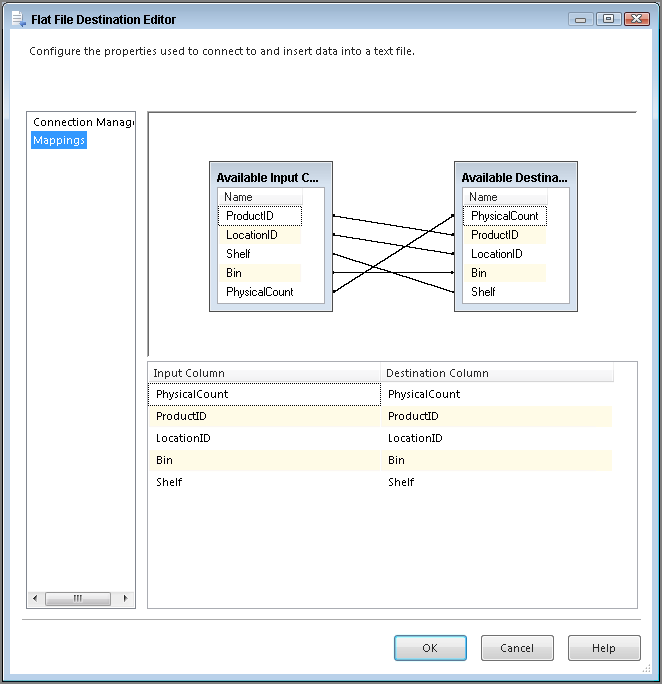Chapter 19
Loading Data to a Destination
After you have set up a source to bring the needed data to the Data Flow, you need somewhere to put it. A destination accepts data from data sources or transformations and sends them to the location specified in the destination’s connection manager.
The difference between configuration of sources and destinations is the Mappings page shown in Figure 19-1. The Mappings page points each column from your Data Flow’s pipeline to each column that is available in your destination. By default, SSIS matches columns with the same name, but you can easily match columns by dragging one of Available Input Columns to the appropriate Available Destination Columns if your column names do not correspond. As you can see in the figure, it is not mandatory that these columns be in the same order from the source to the destination.
Until the destination is connected to the rest of pipeline, you cannot configure it. To make the connection, select the source or a transformation and drag the blue arrow to the destination. If you want to output a transformation’s bad data to a destination, drag the red arrow to that destination. In this lesson, the most frequently used destinations (OLE DB, Flat File, and Excel) are demonstrated.
Destination Assistant
The Destination Assistant is a new feature of SSIS that helps guide you through defining a connection ...
Get Knight's Microsoft SQL Server 2012 Integration Services 24-Hour Trainer now with the O’Reilly learning platform.
O’Reilly members experience books, live events, courses curated by job role, and more from O’Reilly and nearly 200 top publishers.


